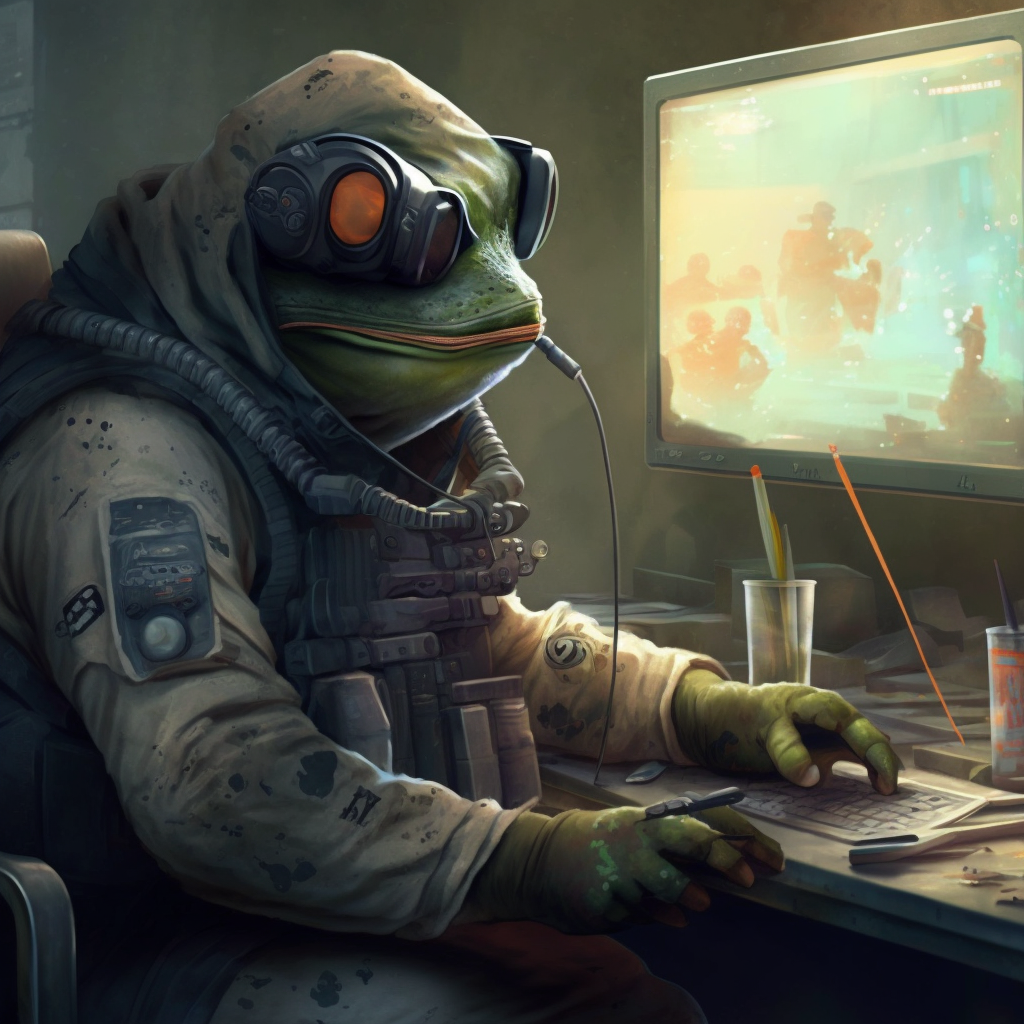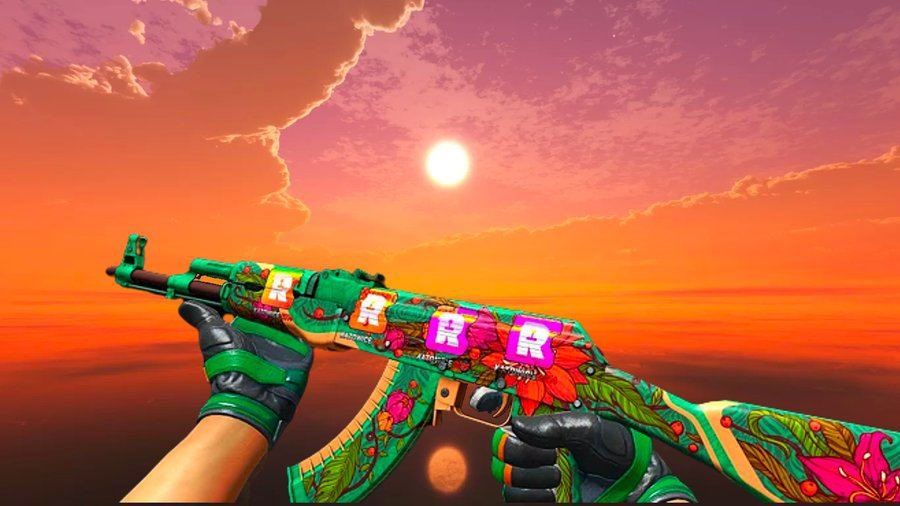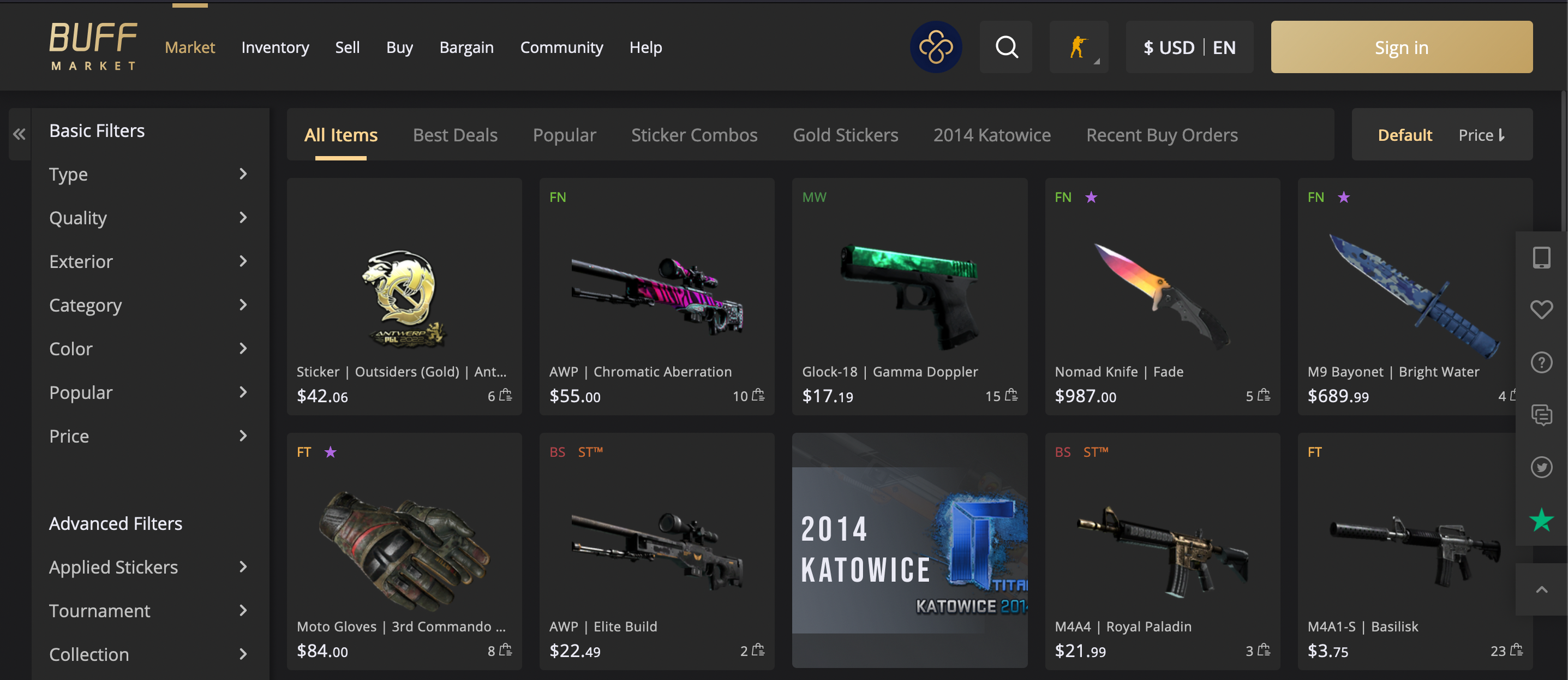Stockholm Syndrome Pt. Deux: Analogues
In this installment of Stockholm Syndrome we’re going to explore some analogues between web2 and web3. It’s already a given that gamers spent real money on digital assets – DLC, skins, battlepasses, in game currencies. The beauty of web3 based ownership models in gaming is that no one is trying to change existing consumer behavior.

Stockholm Syndrome Pt. Deux: Analogues
Before we dive into Part Deux, let’s give a quick recap of what happened in Part Un. In our first piece we explored the current gaming market by looking at the size and popularity of various monetization strategies, breaking down the actual mechanics and whether they were good or bad for gamers. With this context we then took a look at Diablo: Immortal as a case study. This game made a perfect one given both the intense criticism that Blizzard faced over the clear pay-to-win mechanics combined with aggressive microtransactions juxtaposed against the incredible amount of money the game made. So while the gaming community seemed to be largely pissed off with many of the monetization strategies for Diablo: Immortal, it didn’t ultimately stop people from playing the game and turning it into financial success. As of November 2022 the game had reportedly made over 300m in revenue.
In this installment of Stockholm Syndrome we’re going to explore some analogues between web2 and web3. It’s already a given that gamers spent real money on digital assets – DLC, skins, battlepasses, in game currencies. The beauty of web3 based ownership models in gaming is that no one is trying to change existing consumer behavior. At an infrastructure level web3 simply facilitates less friction in the ownership of digital assets vs existing web2 marketplaces. With the framing in place let’s dive right into a case study with none other than Counter-Strike: Global Offensive.
Case Study: Counter-Strike: Global Offensive

Counter-Strike: Global Offensive, otherwise known as CS:GO, is one of the most popular and successful First Person Shooters (FPS) of all time. For those unfamiliar with Counter-Strike, it’s a game that has been around for a long time. Starting out as a Half-Life mod in 1999, the first Counter-Strike stand alone game was launched by Valve in 2000. Over the years, there have been different versions of the game, such as Counter-Strike: Source in 2004. CS:GO has been the face of the franchise for over a decade now. While CS:GO is not the biggest game out there, they still have around 800k daily active players on average. This month they managed to break their all time concurrent count with over 1.4m players. You can dig into active player stats for the game via SteamDB.
Aside from just being a great game, CS:GO has a robust digital asset economy with their skins. Valve added skins in 2013 via cases (basically a loot box or pack of cards) which could be opened with case specific keys. Valve also allowed community members to play an active role by uploading their own skins and finishes, with the most popular ones via voting being made available in the Winter Offensive Weapons Case. The term “skins” encompasses all kinds of game assets from the guns themselves to the character skins to the gloves you see in the first person POV to your melee knife. Over time there have been new digital assets added such as stickers (which can be applied to a gun skin to modify it), graffiti sprays (which players can use to tag the battle arena), and even licensed music clips (which play for the MVP of a given round). The total market cap of CS:GO digital assets varies but it's estimated to be in the billions – though it’s worth noting that it's unclear what kind of volume CS:GO digital assets do day-to-day or even year-over-year. What is more clear is that Valve is making a killing on CS:GO still with 2020 revenue reported at over $250m while reporting as of this year indicated Valve could be pulling in over $50m per month right now in just key sales for unlocking cases. I want to be clear that these numbers are speculative and a feature of private markets and private companies being opaque. Additionally, it is also worth noting that CS:GO skins are in something of a bull market right now and the volume and prices are not indicative of historical trends or future performance.
Unlike many games, CS:GO actually does have an authorized secondary market for digital assets via the Steam store. There are also a number of other third party marketplaces such as Buff that support asset trading. This means that gamers have some sense of ownership of these assets, with all the usual web2 caveats in place. For a more in-depth look at this market please check out this thread from 0xBagman which adds more color to the basics we’ll cover here. If you dig a bit below the surface here and examine some of the details around how primary and secondary marketplaces work for CS:GO skins it paints a familiar picture. For example, sales through the primary marketplace (Steam Market) are eating a 13% marketplace fee (sorta funny to think about in the context of NFT marketplaces). Additionally, anything you earn from trading digital assets is effectively credit, locked in the Steam Marketplace ecosystem without the ability to cash out. If you do want to chase slightly lower fees and the ability to turn these digital assets back into chase you can do so via third party marketplaces, however it’s worth noting that this does add additional hassle and risk.

Looking at Buff (and its companion for mainland China Buff163) we can see the many hoops owners must jump through in order to see cash back in their bank account. All the details can be found on this FAQ but we’ll give a quick overview. In order to really use this marketplace you need to go through KYC, which on the surface of it is somewhat ridiculous. Requiring people to go through the same process required to buy securities on Robinhood, open a bank account, or sling shitcoins on a centralized exchange to trade video game gun skins is the very definition of Kafkaesque. Once you are KYC’d you can deposit funds into your account to buy skins. The fees on deposits vary but are as high as 4.6%. For buyers, there is no fee however the seller eats 2.5% on every transaction. When it comes to actually cashing out you get hit with more fees here as well. Buff supports two different payment processors (both of whom have a 1% fee), plus your bank may charge you various other fees in order to process the transaction. Finally, any cash out is subject to the typical delay that moving money via traditional financial rails takes.
As if that weren’t enough pain, Valve delivers a final kick in the nuts via a 7 day cool off for newly acquired digital assets at an account level before those assets can be traded again. That is right, dear reader, you are not allowed to transfer assets you buy for 7 days. This may be a good countermeasure to speculators but it takes away freedom from asset owners in the process. A fair question to ask around digital assets that are purely cosmetic is who honestly cares if they are heavily speculated on? They have no impact on winning or playing the game. If people want to trade them then so be it. Clearly Valve has taken a different approach here but for those of us who are used to digital ownership in web3 this is a tough pill to swallow.
Risks + Opportunities
When I consider web2 games that leverage digital assets and have some kind of ownership model (official or otherwise) they tend to be centered around semi-fungible items – skins, cards, etc – rather than fungible ones like in-game currencies. I find this instructive as to where the risks and opportunities lie both for developers and gamers. On the opportunity side it is beyond obvious that gamers already spend billions of dollars on digital assets. Battlepasses, DLC, in-game currencies, skins, etc. This is the beauty of bringing web3 into gaming – there isn’t a need to change consumer behavior.
Games like CS:GO just further prove this. I’d argue that Valve could potentially make even more money leveraging blockchain technology due to decreasing friction, increasing ownership, and adding in a greater layer of transparency around things like rarity. You get all these things for free when leveraging public blockchains (like Ethereum and its Layer 2 scaling solutions) and existing token standards for representing digital ownership natively on the web (such as ERC-1155). I can easily see a “Web2.5” middle ground where developers look to mint semi-fungible digital assets on public blockchain while still maintaining their existing web2 payment and monetization rails that have been so successful in getting gamers to actually spend dollars.

While non-fungible and semi-fungible digital assets moving on chain feels like an obvious opportunity, the opposite may be true on the fungible token side. While long term I see the industry moving towards fungible tokens as in game currency, in the short term this is where much of the risk lies. Consider games that leverage in-game currencies such as Fortnite with V-Bucks or Magic: Arena with Gems. These digital currencies don’t have a real exchange rate (in fact many games implement unit pricing) and you cannot easily turn these currencies back into cash. There is no monetary policy to consider and developers can simply “print” to demand. Users are familiar with this flow – functionally loading up a giftcard and accepting it’s a sunk cost if you stop playing. While I’d argue this setup isn’t ideal for gamers (though it suits developers just fine) it’s an uncomfortable middle ground that keeps risk at bay until token economies are more battle tested and different models are proven out.
If you’re a crypto-curious game developer today the path, in my humble opinion, is clear. Start with non-fungible and semi-fungible tokens. There’s tons of room to build and experiment here when it comes to asset ownership and asset economies. The crypto rails can be abstracted from gamers until they choose to care and those who are ready to experience true digital asset ownership can have that out of the box from the start. As a result, the experience for the gamer that doesn’t care about ownership should really be no different than it is today. Ultimately this is just infrastructure we’re talking about, and we’re really just swapping out private databases for public ones.
Game Over
We’ve seen that one of the most popular games on Steam, and one of the most popular First Person Shooters of all time, has a robust economic engine driven by digital assets. The developer, unlike many others, allowing for these assets to be owned by players (albeit in a permissioned way) helps to paint a picture of where web3 and gaming can start to intersect in the immediate future. While this “Web2.5” approach might annoy some crypto maxis, one of the biggest reasons Web3 has failed to effectively penetrate one of its most perfect markets is by focusing far too much on the crypto side and not enough on the actual gaming and user experience side. Ultimately those of us who truly believe that web3 will change the gaming industry for the better all want the same thing – adoption. How we get there is still up for grabs. However, I’d bet that it isn’t a straight road to get there. If we have to take a few pit stops along the way then so be it.
In our third and final installment of "Stockholm Syndrome" we'll take a look at some of the up and coming games looking to leverage web3 and blockchain technology. In it we'll explore how some of these projects may be able to break through to mainstream gamers in a way that current web3 games have yet to do. Until then, stay frosty amigos.
0x0x BEW
Any views expressed in the below are the personal views of the author and should not form the basis for making investment decisions, nor be construed as a recommendation or advice to engage in investment transactions. As always, please do your own research. This is not financial advice. Every strategy is not for everyone. Each investor needs to understand what is right for them.
Meet BEW, a wine collecting web developer who moonlights as an amateur chef. BEW's passion for wine is evident in his vast collection of bottles from all over the world. He also has a great interest in web development and is known for his skills in multiple programming languages such as Python, JavaScript and HTML/CSS. He is able to combine his love for wine and web development by creating visually appealing and user-friendly websites for wineries and wine shops. He is also an amateur chef and loves experimenting in the kitchen and pairing wine with his dishes. In his free time, BEW enjoys 3D glasses and the immersive experience it gives him when watching movies and playing video games.